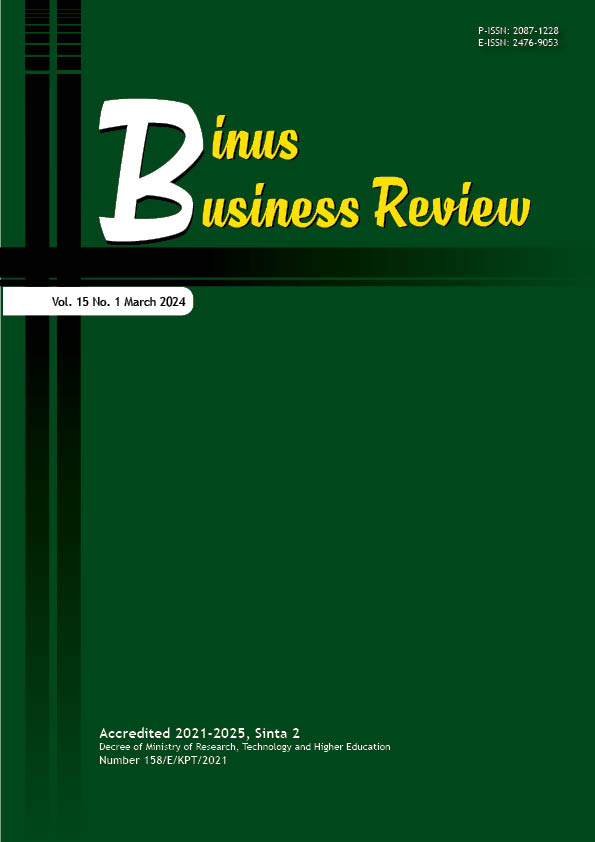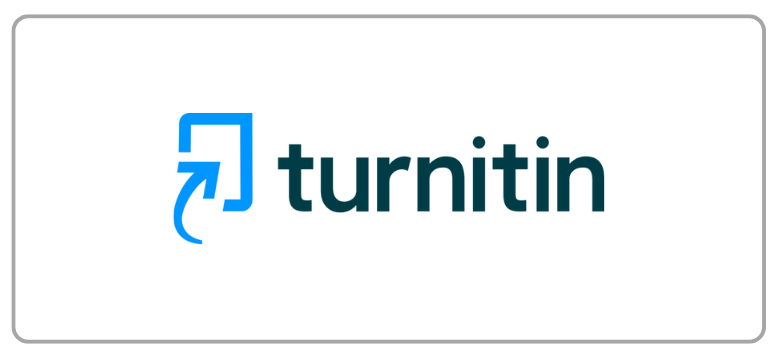The Risk Assessment and Human Risk Control in Indonesian Power Plant
DOI:
https://doi.org/10.21512/bbr.v15i1.9803Keywords:
risk assessment, human risk control, Indonesian power plantAbstract
Efforts to enhance labor productivity are intrinsically linked to the improvement of Occupational Health and Safety (OHS) standards. The research focused on the optimization of OHS by conducting a COVID-19 risk assessment, with the goal of identifying and implementing Human Resource (HR) risk control measures to augment employee performance. In employing a qualitative methodology, the data were amassed through a combination of interviews, observations, and document analysis involving a diverse group of 23 respondents from various departments. The risk assessment process was meticulously structured into four phases: identification of causes, implementation of preventive measures, development of recovery strategies, and evaluation of consequences. The researchers organized the data into primary and secondary categories for analysis and utilized the Bow Tie method to elucidate the findings. The analysis reveals that the human factor, specifically employees’ non-compliance with safety protocols, poses the greatest risk for virus transmission. The result identifies the warehouse, workshop, administration building, and Coal Handling Control Building (CHCB) as the most critical areas requiring stringent risk controls. The results also provide an overview in preparing the basis for Corrective Action and Preventive Action (CAPA). It provides benefits for implementing OHS in power plant companies through recommendations such as evaluation, preventive action, and risk control through COVID-19 risk assessment. Finally, the research delineates strategies for managing risks through preventive measures and recovery processes to mitigate the impacts and consequences associated with these hazards.
References
Ahmad, F. (2022). Implementation of Occupational Safety and Health (K3) for increasing employee productivity. Jurnal Economic Resources, 5(2), 365–376.
Ahmed, A., Alkahtani, M., El-Tamimi, A. M., Kaid, H., & Abidi, M. H. (2021). Developing a model for safety risk assessment under uncertainty for the manufacturing industry: A case study of Pole factory hazards in Riyadh, Saudi Arabia. Mathematical Problems in Engineering, 1–13.
Alauddin, M., Islam Khan, M. A., Khan, F., Imtiaz, S., Ahmed, S., & Amyotte, P. (2020). How can process safety and a risk management approach guide pandemic risk management? Journal of Loss Prevention in the Process Industries, 68, 1–13.
Alijoyo, A., Wijaya, Q. B., & Jacob, I. (2021). Bow Tie analysis (Analisis dasi kupu-kupu). CRMS.
Ambarwati, R., Yuliastri, D., & Sulistiyowati, W. (2022). Human resource risk control through COVID-19 risk assessment in Indonesian manufacturing. Journal of Loss Prevention in the Process Industries, 74(January), 1–9.
Andrade, C. (2021). The inconvenient truth about convenience and purposive samples. Indian Journal of Psychological Medicine, 43(1), 86–88.
Anwar, G., & Abdullah, N. N. (2021). The impact of human resource management practice on organizational performance. International Journal of Engineering, Business and Management (IJEBM), 5(1), 35–47.
Ardiana, A., & Hasibuan, S. (2022). Occupational health and safety risk identification and analysis of warehouse in distribution sector post pandemi COVID-19. In Proceedings of the 3rd Asia Pacific International Conference on Industrial Engineering and Operations Management (pp. 1868–1876). IEOM Society International.
Baharin, R., Syah Aji, R. H., Yussof, I., & Mohd Saukani, N. (2020). Impact of human resource investment on labor productivity in Indonesia. Iranian Journal of Management Studies, 13(1), 139–164.
Campbell, S., Greenwood, M., Prior, S., Shearer, T., Walkem, K., Young, S., ... & Walker, K. (2020). Purposive sampling: Complex or simple? Research case examples. Journal of Research in Nursing, 25(8), 652–661.
Das, S., Garg, A., Maiti, J., Krishna, O. B., Thakkar, J. J., & Gangwar, R. K. (2021). A comprehensive methodology for quantification of Bow-tie under type II Fuzzy data. Applied Soft Computing, 103(May).
Firmansyah, M. H., Sahri, M., & Setianto, B. (2021). Implementation of occupational safety and health risk management in Islamic Hospital Surabaya A. Yani. Medical and Health Science Journal, 5(2), 16–26.
Georgousoglou, K., Mouzakitis, Y., & Adamides, E. D. (2022). The application of the Bow Tie approach in the risk assessment of a municipal solid waste management system. In IOP Conference Series: Earth and Environmental Science. IOP Publishing.
Grandez, J. P., Padilla, R. D. P. L., & Benites-Alfaro, E. (2022). Reduction of the rate of accidents at work through the implementation of a occupational safety and health management system in the industrial electromechanical industry. Chemical Engineering Transactions, 91, 319–324.
Hidayah, P., Herniwanti, & Zaman, M. K. (2022). Implementation of Occupational Safety and Health (K3) inspection as a work accident prevention effort in palm oil factory, Kampar Regency, Riau Province. Science Midwifery, 10(3), 2215–2224.
Huang, Y., Zhang, Z., Tao, Y., & Hu, H. (2022). Quantitative risk assessment of railway intrusions with text mining and Fuzzy rule-based Bow-Tie model. Advanced Engineering Informatics, 54(October).
Khusufi, U. N., Fasya, A. H. Z., Handayani, D., & Wijaya, S. (2023). Literature review: Using HIRADC method analyzing the risk of work accidents in the manufacturing sector in Indonesia. KESANS: International Journal of Health and Science, 2(5), 260–267.
Kryukov, E. V., Cherkashin, D. V., Reutskiy, I. A., Solntsev, V. N., Bucenko, S. A., Sobolev, A. D., ... & Kutelev, G. G. (2021). Differentiated approach to the implementation of preventive and anti-epidemic measures among military personnel based on the COVID-19 disease risk assessment scale. Infectious Diseases: News, Opinions, Training, 10(2), 31–38.
Loosemore, M., Sunindijo, R. Y., Lestari, F., Kusminanti, Y., & Widanarko, B. (2019). Comparing the safety climate of the Indonesian and Australian construction industries: Cultural and institutional relativity in safety research. Engineering, Construction and Architectural Management, 26(10), 2206–2222.
Mappeasse, M. Y., & Wijaya, I. (2021). Studi penerapan kesehatan dan keselamatan kerja pada PLTU Punagaya Jeneponto. Jurnal Media Elektrik, 18(3), 94–99.
Marzuki, N., Afandi, D., & Rahayu, E. P. (2021). Analysis of the implementation of the Occupational Safety and Health (K3) program at the Madani regional hospital of Pekanbaru City in 2021. Budapest International Research and Critics Institute-Journal (BIRCI-Journal), 4(4), 9174–9180.
Mawiestin, A., Zamriana, W., Fitrina, R., & Indriyati, I. (2021). Evaluation on the application of Occupational Safety and Health (K3) procedures at PT. IPC during pandemic using TheSWOT Analysis. Advances in Transportation and Logistics Research, 4, 692–702.
Mwaruta, S. S. (2022). Occupational safety and health training and performance of cement manufacturing firms in Kenya (Doctoral dissertation). Jomo Kenyatta University of Agriculture and Technology.
Nurissa’adah, A., Ismiyah, E., & Rizqi, A. W. (2022). Analysis of Occupational Health, and Safety (K3) in the workshop area using the HIRA and 5S methods at PT. Ravana Jaya. MOTIVECTION: Journal of Mechanical, Electrical and Industrial Engineering, 4(2), 161–174.
Pallocca, G., Moné, M. J., Kamp, H., Luijten, M., Van de Water, B., & Leist, M. (2022). Next-generation risk assessment of chemicals-rolling out a human-centric testing strategy to drive 3R implementation: the RISK-HUNT3R project perspective. Alternatives to Animal Experimentation: ALTEX, 39(3), 419–426.
Pascarella, G., Strumia, A., Piliego, C., Bruno, F., Del Buono, R., Costa, F., ... & Agrò, F. E. (2020). COVIDâ€19 diagnosis and management: A comprehensive review. Journal of Internal Medicine, 288(2), 192–206.
Perdana, R. M. (2021). Analysis of Theory of Planned Behavior (TPB) in disobedience behavior towards Occupational Health and Safety (K3). Journal of Economics, Business, and Government Challenges, 4(2), 139–146.
Putra, R. D., Sukandari, B., & Wihartono, W. (2019). Risk management of occupational safety and health in KRI docking project using Hazard Identification, Risk Assessment and Risk Control (HIRARC) method case study: PT. PAL Indonesia. Journal Asro, 10(2), 76–91.
Rachmawati, A., Sukwika, T., & Ramli, S. (2022). Implementation of hospital risk management using Bowtie method. Jurnal Mantik, 6(2), 2616–2623.
Ricardo, J., Manurung, E. H., & Hutagaol, K. (2022). Analisis risiko konstruksi pada proyek pembangunan rumah susun padat Karya Jakarta Utara. Formosa Journal of Science and Technology, 1(4), 375–392.
Ridwan, A., Nuroni, A., Adelia, A., & Sonda, A. (2022). Analysis of occupational health and safety at a maritime warehouse using Hazard Identification, Risk Assessment and Risk Control (HIRARC). Journal Industrial Servicess, 8(2), 187–192.
Rugulies, R., Sørensen, K., Di Tecco, C., Bonafede, M., Rondinone, B. M., Ahn, S., ... & Pega, F. (2021). The effect of exposure to long working hours on depression: A systematic review and meta-analysis from the WHO/ILO Joint Estimates of the Work-related Burden of Disease and Injury. Environment International, 155(October), 1–37.
Rupiwardani, I., Sari, D., & Yuniastuti, T. (2022). HIRARC method for investigating worker behavior regarding risk management. Asian Journal of Management, Entrepreneurship and Social Science, 2(04), 107–121.
Sanni-Anibire, M. O., Mahmoud, A. S., Hassanain, M. A., & Salami, B. A. (2020). A risk assessment approach for enhancing construction safety performance. Safety Science, 121, 15–29.
Saputra, F., & Mahaputra, M. R. (2022). Building Occupational Safety and Health (K3): Analysis of the work environment and work discipline. Journal of Law, Politic and Humanities, 2(3), 105–114.
Sari, D. P., Pujotomo, D., Wicaksono, P. A., & Yunanto, K. H. R. (2019). An integrated relative importance index, risk allocation and Bow Tie analysis for analyzing risks of the Amartha View Apartment development project. In IOP Conference Series: Materials Science and Engineering. IOP Publishing.
Schröder, I., Czornyj, E., Blayney, M. B., Wayne, N. L., & Merlic, C. A. (2020). Proceedings of the 2018 Laboratory Safety Workshop: Hazard and risk management in the laboratory. ACS Chemical Health & Safety, 27(2), 96–104.
Setiawan, F., & Astutik, M. (2022). The effect of training, supervision and Occupational Safety and Health (K3) culture on employee performance. Indonesian Journal of Law and Economics Review, 17, 1–14.
Sitopu, Y. B., Sitinjak, K. A., & Marpaung, F. K. (2021). The influence of motivation, work discipline, and compensation on employee performance. Golden Ratio of Human Resource Management, 1(2), 72–83.
Sobirin, M., Putra, A. N., Fertilla, N. C., & Susanti, I. I. (2022). Analysis of types of Occupational Health and Safety Risk (K3) in erection work. ARRUS Journal of Engineering and Technology, 2(2), 65–77.
Supriyatna, H., Kurniawan, W., & Purba, H. H. (2020). Occupational safety and health risk in building construction project: literature review. Operational Research in Engineering Sciences: Theory and Applications, 3(1), 28–40.
Suprianto, S., Fitryani, V., Rahim, A., Rachman, R., & Pamungkas, B. D. (2021). Implementation of occupational safety and health policies during the COVID-19 Pandemic. In 2nd Annual Conference on Education and Social Science (ACCESS 2020) (pp. 208–211). Atlantis Press.
Susilo, A., Rumende, C. M., Pitoyo, C. W., Santoso, W. D., Yulianti, M., Herikurniawan, H., ... & Yunihastuti, E. (2020). Coronavirus disease 2019: Tinjauan literatur terkini. Jurnal Penyakit Dalam Indonesia, 7(1), 45–67.
Taleb-Berrouane, M., Khan, F., & Hawboldt, K. (2021). Corrosion risk assessment using Adaptive Bow-Tie (ABT) analysis. Reliability Engineering & System Safety, 214.
Tang, K. H. D. (2020). A comparative overview of the primary Southeast Asian safety and health laws. International Journal of Workplace Health Management, 13(6), 601–632.
Wahab, N. A. A., Aqila, N. A., Isa, N., Husin, N. I., Zin, A. M., Mokhtar, M., & Mukhtar, N. M. A. (2021). A systematic review on hazard identification, risk assessment and risk control in academic laboratory. Journal of Advanced Research in Applied Sciences and Engineering Technology, 24(1), 47–62.
Widarni, E. L., & Bawono, S. (2021). Human capital, technology, and economic growth: A case study of Indonesia. Journal of Asian Finance, Economics and Business, 8(5), 29–35.
Zareia, E., Yazdib, M., Khakzadc, N., & Reniersc, G. (2019). Safety assessment of process systems using Fuzzy Extended Bow Tie (FEBT) model. Chemical Engineering, 77, 1027–1032.
Zwanka, R. J., & Buff, C. (2021). COVID-19 generation: A conceptual framework of the consumer behavioral shifts to be caused by the COVID-19 pandemic. Journal of International Consumer Marketing, 33(1), 58–67.
Downloads
Published
How to Cite
Issue
Section
License
Copyright (c) 2024 Jihan Nada Farera, Rita Ambarwati, Sumartik, Dedy

This work is licensed under a Creative Commons Attribution-ShareAlike 4.0 International License.
Authors who publish with this journal agree to the following terms:
a. Authors retain copyright and grant the journal right of first publication with the work simultaneously licensed under a Creative Commons Attribution License - Share Alike that allows others to share the work with an acknowledgment of the work's authorship and initial publication in this journal.
b. Authors are able to enter into separate, additional contractual arrangements for the non-exclusive distribution of the journal's published version of the work (e.g., post it to an institutional repository or publish it in a book), with an acknowledgment of its initial publication in this journal.
c. Authors are permitted and encouraged to post their work online (e.g., in institutional repositories or on their website) prior to and during the submission process, as it can lead to productive exchanges, as well as earlier and greater citation of published work.
USER RIGHTS
All articles published Open Access will be immediately and permanently free for everyone to read and download. We are continuously working with our author communities to select the best choice of license options, currently being defined for this journal as follows: Creative Commons Attribution-Share Alike (CC BY-SA)





















